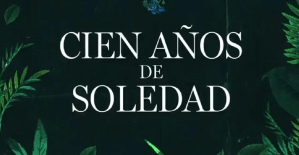It is not that long ago, there roamed strange horses through the grasslands of South Africa. On the neck, shoulders and front torso, the animals wore the typical stripes of a Zebra, the Rest of their fur was dyed a brownish color. The locals are the nerds Quaggas called. At the beginning of the 19th century. Century, you could see the ungulates in many fields. At least, until the big hunt began.
The last animal died in 1883, in a Zoo of Amsterdam. The Quagga is, therefore, up to today as a tragic example of a species known, the feedback was given and thoughtlessly eradicated. Less well known is that a pair of 140-year-old preserved remains of Meat of these animals is triggered in the 80s, a Revolution. A Revolution that has now changed, only the biological genealogy completely. The so-called Paläogenetik gradually begins to change the culture of scientifically-oriented archaeology, fundamentally. In the heart of the genome of extinct species and human ancestors. It allows completely new insights into Evolution and history.
One of the young representatives of this new discipline sitting on a harsh November morning in his office at the University of Potsdam. His name is Michael Hofreiter and has been for five years Professor for Evolutionary Adaptive genomics in Potsdam. His research objects are shown in miniature on the Desk. There are animals that have been around for a long time are: The mammoth, the races, the first chicken, prehistoric horses. Louder comrades of the Quagga, from which, except the bone is not much left. But that's enough for Hofreiter, because most of the time is in the Remains of enough of what he needs: old heritage. It's the time machine, the researchers will always continue to travel back to the past.
the Hype around old DNA
The cult of the ancient DNA began 34 years ago with Allan C. Wilson. The American biochemist was dried muscle and connective tissue shreds of the Quagga from the Mainz natural history Museum. He wanted to isolate the genetic Material from the tissue. In November 1984, Wilson published in the prestigious science journal "Nature", as his Team won for the first time DNA of an extinct species, and had analyzed. Although it was mitochondrial DNA that is located outside of the nucleus, and only a good three dozen genes. Nevertheless, the scarce contribution was the first documented evidence that DNA can survive in dead Material – in this case, at least 140 years.
Until today, representatives of the Paläogenetik celebrate the date of publication as the birth of the Paläogenetik. A almost at the same time in the GDR published work on DNA from thousands of years old mummies remained unnoticed. An Egyptologist from Scandinavia had worried the Material, and in addition to his Dissertation at the University of Uppsala, mostly at night and on weekends because research. Name: Svante Pääbo. The Swede, who is now one of the Grand masters of the Paläogenetik, was young and unknown.
But when he published his findings in 1985 in "Nature" again, got Pääbo attention and went to Wilson to Berkeley. Other researchers began to look into different ancient tissues and bones to DNA. Some even tried to analyze for millions of years in amber trapped insect genome. Wilson's Quagga and Pääbos mummies led to a Hype about old DNA. Only about the durability of the Erbmoleküls you knew little. The necessary techniques are missing to make old DNA really readable.
"Ancient DNA brings to the analysis a number of problems
."Michael Hofreiter
Professor for Evolutionary Adaptive genomics
"Ancient DNA brings with it a number of problems that do not exist in the analysis of modern DNA," says Hofreiter, who studied with Pääbo. Since the contamination is first. Even good samples consist of a major part of the bacterial DNA, from the searched genome fragments have to be differentiated. In samples from human bone contaminants have been proved by the DNA of the researchers as problematic. It is in this heritage salad still find it, you can do it with fraction factory, it was analyze to 2005 difficult. The so-called Next-Generation Sequencing made it possible, even very short pieces of DNA to analyze.
light, air, heat, moisture, bacteria, and cosmic radiation dismember, digest, and alter the DNA of the date of death. How long will it take until the DNA is completely gone, depends, according to Hofreiter of environmental factors, but also by the source of the samples. So thousands of old bones from the Permafrost is even in a century, mostly still usable DNA, while the genetic material survived in the soft tissues under tropical conditions, sometimes only a few years.
The oldest DNA, the mountains so far, and completely sequencing, is from a 700'000 years old Urpferd, whose bones were discovered in the permanently frozen soil of Canada.
Only a handful of scientists
received The greatest media attention, however, those studies dealing with the extinct ancestors of Homo sapiens. Svante Pääbo, who directs since 1999 the Max-Planck-Institute for evolutionary anthropology in Leipzig, is dominated by this branch of the Paläogenetik more or less unchallenged. Especially the complete genome of the Neanderthal and the Pääbo discovered denisovans are considered to be ground-breaking achievements in the field. In addition to Pääbo, there are only a handful of scientists at a similar level.
The majority of the members of this researcher clans are themselves well-connected. This may, however, have also contributed to the Paläogenetik is isolated for a long time and sometimes even unnoticed by the traditional subjects of archaeology and anthropology remained. The science historian Elsbeth Bösl has described this effect clearly in their book "Doing Ancient DNA".
Many experts from the cultural discipline to see with the now rapidly evolving discipline of Paläogenetik problems up. What genetic data obtained from ancient bones can tell, actually about the most complex migration movements, and the equally multi-layered cultural exchange of the people?
The science journal "Nature" has been received in the last March on this Clash of cultures. The occasion of a study, which was selected as the "Bell Beaker Bombshell", as the bell beaker bomb, caused a sensation, and shortly before the magazine was published. In the study of David, it was a culture, the bell-shaped Pottery. In the UK, such vessels were placed to the North of Stonehenge in the stone age in a no longer used burial mounds, although the origins of the bell beaker culture were on the continent.
Back to life
Many archaeologists and anthropologists interpreted the findings as cultural Transitions within an evolving, stable population of great Britain between 3600 and 2000 before the birth of Christ. However, the Paleogene climatic data from a total of 400 Europeans of that time to draw a completely different picture. Accordingly, the Neolithic were time island residents had buried their dead in the burial mounds, up to 2000 before Christ, long since completely disappeared. Almost the entire population of the island was replaced by immigrants from the European continent, which brought their bell-beaker culture. There are still archaeologists who do not want to follow this Interpretation, for the genetic results fit to the archaeological findings.
For animals are not subject to this scepticism. Wilson's quagga study has already been disclosed in 1984, something that you would have without the view of the genome not detected. The comparison with modern representatives of the genus horse, showed that the Quagga was probably not a separate species but merely a subspecies of the present-day plains zebras, which had been formed by spatial Isolation. In 1987 the German researcher Reinhold Rau founded in South Africa, the quagga project. The once-widespread animal should be brought to life by back-breeding of modern Zebras back to life.
The first foal came in 1988 to the world, now there are 116 animals in six of the extinct Quagga confusingly similar. Whether these animals are also genetically the original subspecies, you can't but notice. Despite the relatively young skeletons from the 19th century. Century was not able to win to the mitochondrial ancient DNA ancient genetic material from the cell nucleus of the extinct Zebra. Maybe you should not say.
(editing Tamedia)
Created: 30.01.2019, 08:55 PM

 New York: at Columbia University, the anti-Semitic drift of pro-Palestinian demonstrations
New York: at Columbia University, the anti-Semitic drift of pro-Palestinian demonstrations What is Akila, the mission in which the Charles de Gaulle is participating under NATO command?
What is Akila, the mission in which the Charles de Gaulle is participating under NATO command? Lawyer, banker, teacher: who are the 12 members of the jury in Donald Trump's trial?
Lawyer, banker, teacher: who are the 12 members of the jury in Donald Trump's trial? After 13 years of mission and seven successive leaders, the UN at an impasse in Libya
After 13 years of mission and seven successive leaders, the UN at an impasse in Libya What High Blood Pressure Does to Your Body (And Why It Should Be Treated)
What High Blood Pressure Does to Your Body (And Why It Should Be Treated) Vaccination in France has progressed in 2023, rejoices Public Health France
Vaccination in France has progressed in 2023, rejoices Public Health France Food additives suspected of promoting cardiovascular diseases
Food additives suspected of promoting cardiovascular diseases “Even morphine doesn’t work”: Léane, 17, victim of the adverse effects of an antibiotic
“Even morphine doesn’t work”: Léane, 17, victim of the adverse effects of an antibiotic Unemployment insurance: tightening of the rules on July 1
Unemployment insurance: tightening of the rules on July 1 Cancers, chronic diseases... Billions of workers hit by climate change, warns the UN
Cancers, chronic diseases... Billions of workers hit by climate change, warns the UN Closure of the A13 extended until at least mid-week
Closure of the A13 extended until at least mid-week Closure of the A13: Pécresse “asks the State to take charge of making the A14 free”
Closure of the A13: Pécresse “asks the State to take charge of making the A14 free” The series adaptation of One Hundred Years of Solitude promises to be faithful to the novel by Gabriel Garcia Marquez
The series adaptation of One Hundred Years of Solitude promises to be faithful to the novel by Gabriel Garcia Marquez Racism in France: comedian Ahmed Sylla apologizes for “having minimized this problem”
Racism in France: comedian Ahmed Sylla apologizes for “having minimized this problem” Mohammad Rasoulof and Michel Hazanavicius in competition at the Cannes Film Festival
Mohammad Rasoulof and Michel Hazanavicius in competition at the Cannes Film Festival UK lends Ghana treasures stolen during colonization
UK lends Ghana treasures stolen during colonization Skoda Kodiaq 2024: a 'beast' plug-in hybrid SUV
Skoda Kodiaq 2024: a 'beast' plug-in hybrid SUV Tesla launches a new Model Y with 600 km of autonomy at a "more accessible price"
Tesla launches a new Model Y with 600 km of autonomy at a "more accessible price" The 10 best-selling cars in March 2024 in Spain: sales fall due to Easter
The 10 best-selling cars in March 2024 in Spain: sales fall due to Easter A private jet company buys more than 100 flying cars
A private jet company buys more than 100 flying cars This is how housing prices have changed in Spain in the last decade
This is how housing prices have changed in Spain in the last decade The home mortgage firm drops 10% in January and interest soars to 3.46%
The home mortgage firm drops 10% in January and interest soars to 3.46% The jewel of the Rocío de Nagüeles urbanization: a dream villa in Marbella
The jewel of the Rocío de Nagüeles urbanization: a dream villa in Marbella Rental prices grow by 7.3% in February: where does it go up and where does it go down?
Rental prices grow by 7.3% in February: where does it go up and where does it go down? Europeans: “All those who claim that we don’t need Europe are liars”, criticizes Bayrou
Europeans: “All those who claim that we don’t need Europe are liars”, criticizes Bayrou With the promise of a “real burst of authority”, Gabriel Attal provokes the ire of the opposition
With the promise of a “real burst of authority”, Gabriel Attal provokes the ire of the opposition Europeans: the schedule of debates to follow between now and June 9
Europeans: the schedule of debates to follow between now and June 9 Europeans: “In France, there is a left and there is a right,” assures Bellamy
Europeans: “In France, there is a left and there is a right,” assures Bellamy These French cities that will boycott the World Cup in Qatar
These French cities that will boycott the World Cup in Qatar Basketball (F): big winner of Asvel, Basket Landes will face Tarbes in the semi-final of the League
Basketball (F): big winner of Asvel, Basket Landes will face Tarbes in the semi-final of the League Football: Yazici (Lille) “in shock” after an attempted theft at his home
Football: Yazici (Lille) “in shock” after an attempted theft at his home Serie A: victorious over AC Milan, Inter crowned Italian champions for the 20th time
Serie A: victorious over AC Milan, Inter crowned Italian champions for the 20th time Serie A: “Winning a title in a derby has never happened,” relishes Martinez after Inter’s coronation
Serie A: “Winning a title in a derby has never happened,” relishes Martinez after Inter’s coronation


















